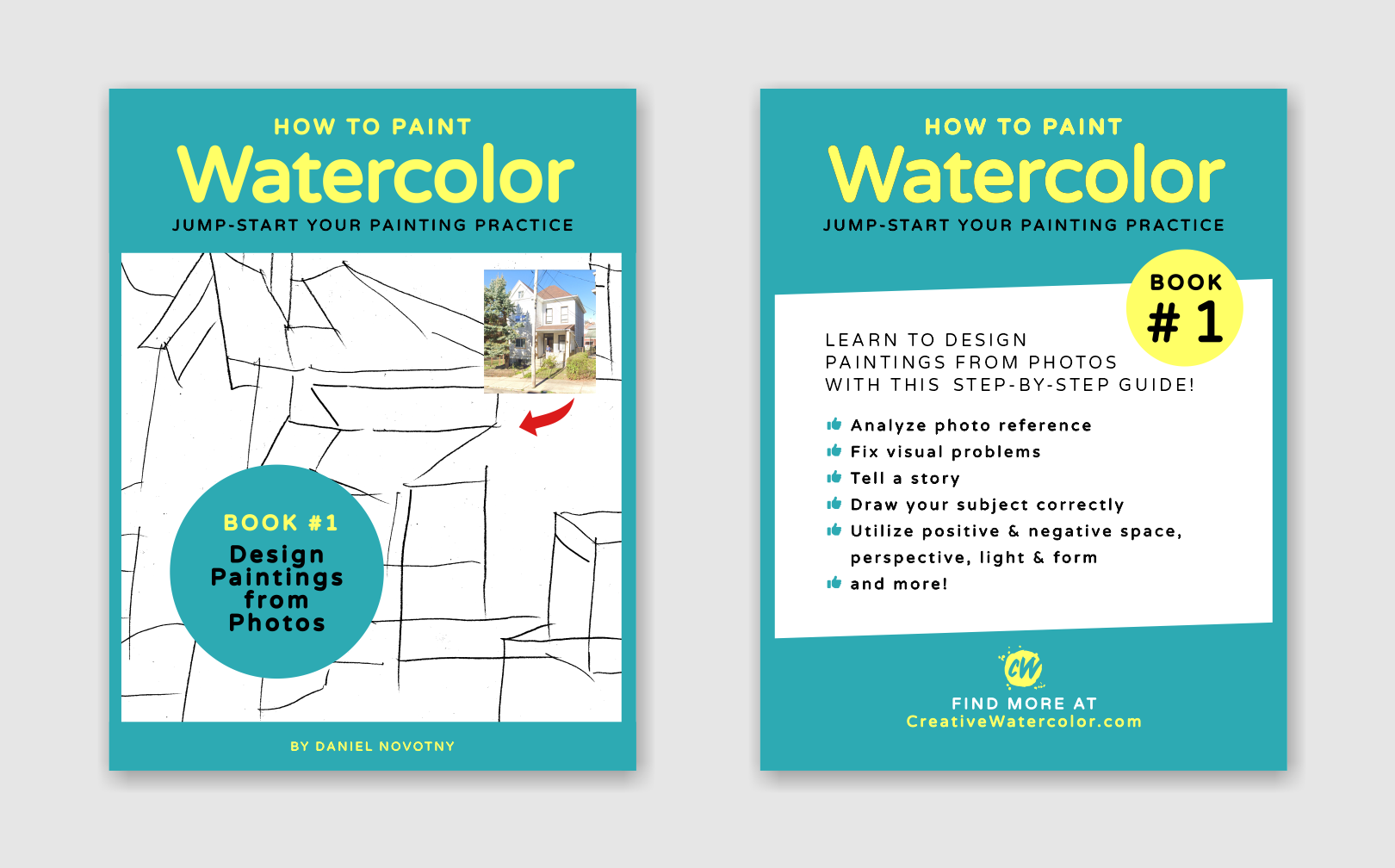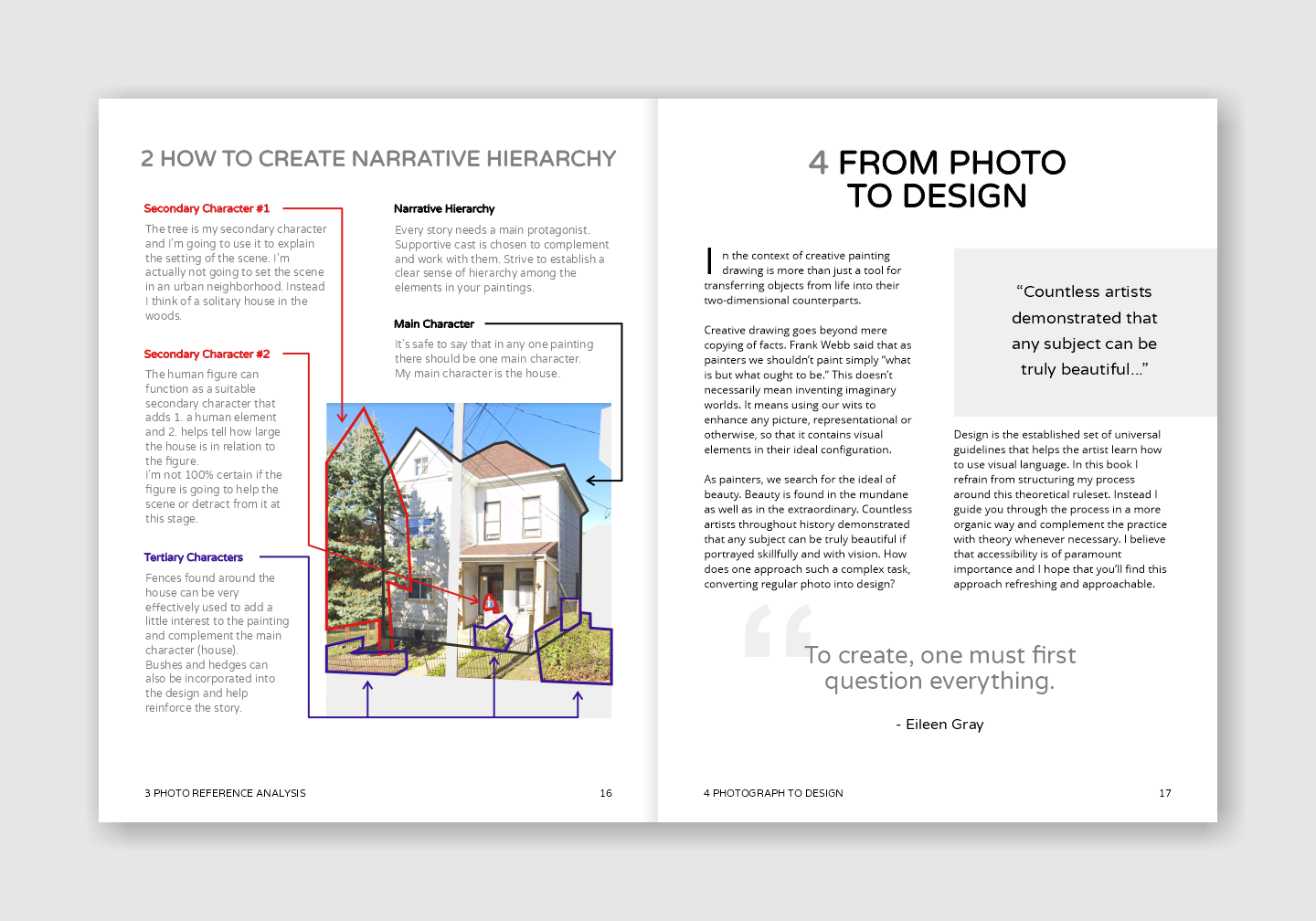How to Paint Watercolor Book #1: Design Paintings from Photos

Instructor
Daniel Novotny

Focus
Design & Composition

Product type
e-Book (PDF download)
$12.99

Learn to design paintings from photos in this step-by-step guide!
- Analyze photo reference
- Fix visual problems
- Tell a story
- Draw your subject correctly
- Utilize positive & negative space, perspective, light & form
- and more!
Why you like it


About this book series
Book #1
In Book #1 you’ll learn about the challenges of working from a photo reference. You’ll see how I analyze and transform my picture into a cohesive design. Yet my concern isn’t purely visual. Painting is storytelling. You’ll learn how I deal with narrative concerns as the design evolves.
Book #2 (sold separately)
Book #2 demonstrates the importance of value. In order for painting to make visual sense the painter must design a readable value pattern. You’ll learn how I go about creating solid value patterns and understand how to approach value in your own designs.
Book #3 (sold separately)
In Book #3 everything comes together. Watercolor takes over the process of exploration. Two watercolor studies are demonstrated in full but more are shown to demonstrate the variety of ideas one subject offers. All of these experiences lead to the final full sheet demonstration which utilizes the most refined version of the design.
For a prolific painting routine one needs knowledge, experience but also guidance. The purpose of this series is to accompany you on your journey and help you take that next step towards painting mastery. I hope that this series can help you establish or fine-tune your own painting practice and ultimately become a small part of your journey towards becoming your own, independent artist.
Table of Contents
1 Reference Photos & Creativity
2 Painting & Storytelling
3 Photo Reference Analysis
1 How To Resolve Visual Clutter
2 How To Create Narrative Hierarchy
4 From Photo To Design
1 Large Shapes First: The Gesture
2 Analysis & Spatial Distortion
3 How To Fix Distorted Perspective
5 The Painting Rectangle
1 Context
2 The Design Rectangle
3 Positive & Negative Space
4 The Concept Of Integration
6 Creative Solutions To Painting Problems
1 Imagine Objects In Space
2 Shapes As Puzzle Pieces
3 Search The Neighborhood
4 Perspective Doesn’t Create Depth
5 Light Vs. Form
7 Design Paintings from Photos Cheat Sheet
Book features
-
Page total
57 pages -
Recommended skill level
Intermediate * -
Product type
e-book (PDF download)
Questions?
Purchase book
$12.99
*limited number of copies available
PLEASE NOTE
This is Book #1 in a 3-part series. By purchasing Book #1 you don’t automatically gain access to parts 2 or 3 and will have to purchase them separately.



Share

One Response
This well-thought out book, the first of a trilogy, sets the stage to unravel the complexities surrounding painting design and composition. Unlike most watercolor artists who teach how to paint pretty pictures by slavishly replicating the nature, Daniel highlights the important role that the design principles play in transforming “what is there” to “what ought to be there”. This simplification process is a sine quo non to producing strong compositional paintings. Perhaps more importantly, it is a path to self discovery, creativity and artistic expression. Daniel’s no-nonsense conceptual approach is a refreshing guiding light in this arduous yet most rewarding journey.